 Last additions - Maibara 米原市 Last additions - Maibara 米原市 |

From Kashiwabara-juku, heading toward Samegai-juku.Jun 25, 2008
|
|

Jun 22, 2008
|
|

Path to Kamaha Castle, a mountaintop castle in the distance. Only stone walls remain. 鎌刃城Jun 22, 2008
|
|

Kitano ShrineJun 22, 2008
|
|

Bamba-juku monumentJun 22, 2008
|
|

Jun 22, 2008
|
|

Jun 22, 2008
|
|

A stone found in a river bank. Since it has a hole, it is thought to be a foundation stone for a building's pillar.Jun 22, 2008
|
|

Turn left to hike to Kamaha Castle ruins. 鎌刃城Jun 22, 2008
|
|

There's no explanation about the shrine.Jun 22, 2008
|
|

Map of Kamaha Castle. 鎌刃城Jun 22, 2008
|
|

Naotaka Shrine Honden HallJun 22, 2008
|
|

The shrine has no human staff, but a security camera operates.Jun 22, 2008
|
|

Naotaka Shrine toriiJun 22, 2008
|
|

Naotaka ShrineJun 22, 2008
|
|

Naotaka Shrine, dedicated to Lord Ii Naotaka, the third lord of Hikone Castle. 直孝神社Jun 22, 2008
|
|

From Rengeji temple, a short distance away on the Nakasendo Road is this path to Naotaka Shrine.Jun 22, 2008
|
|

Temple garden. Best during spring when the flowers bloom.Jun 22, 2008
|
|

View behind the Hondo.Jun 22, 2008
|
|

Also behind the Hondo is this Ikko-sugi tree, 700 years old. Named after the temple's founding priest Saint Ikko, it was planted where Ikko was cremated. Over 30 meters high and 5 meters wide. 一向杉Jun 22, 2008
|
|

View from Hondo hall.Jun 22, 2008
|
|

Side of the HondoJun 22, 2008
|
|

Jun 22, 2008
|
|

Bamba Chutaro Jizo-son statue, based on a character in the novel "Mabuta-no-Haha" 瞼の母 by Hasegawa Shin (1884-1963) 長谷川伸. 番場忠太郎Jun 22, 2008
|
|

Behind the Hondo hall is a small hill with the Bamba Chutaro Jizo-son statue.Jun 22, 2008
|
|

There are more steps which lead to graves of temple priests and Saint Ikko's mausoleum.Jun 22, 2008
|
|

Mausoleum of Saint Ikko Shunsho.Jun 22, 2008
|
|

Graves of previous temple priests.Jun 22, 2008
|
|

Small mausoleum for Saint Ikko. 一向上人の御廟Jun 22, 2008
|
|

Graves of Hojo Nakatoki and his men from the Rokuhara Tandai. 北条仲時一行の墓Jun 22, 2008
|
|

Over 430 gravestones. Hojo Nakatoki and his men were besieged in Bamba by Southern Imperial Court forces. They fought back, but lost and slit their bellies in front of Rengeji's Hondo main hall.Jun 22, 2008
|
|

The temple's third priest wrote the names and age (youngest was 14) of the known fallen warriors in a scroll. He also made these gravestones for them. Visuallly, it's very impressive edifice.Jun 22, 2008
|
|

The gravestones have five levels. In fall, the surrounding maple leaves turn blood red.Jun 22, 2008
|
|

Grave of the lord of Kamaha Castle who helped to rebuild the Rengeji temple.Jun 22, 2008
|
|

A few steps up a slope.Jun 22, 2008
|
|

Way to the graves of Hojo Nakatoki and his men who committed suicide.Jun 22, 2008
|
|

Memorial for Hojo Nakatoki and his men. They had lost to Ashikaga Takauji in the battle at Kyoto and were trying to escape to Kamakura, but was caught by Takauji's forces at Bamba.Jun 22, 2008
|
|

Memorial for victims of the Pacific War.Jun 22, 2008
|
|

Monument for a poem by Saito Mokichi (1882-1953). 斉藤茂吉の歌碑 「松風の音を聞くときは 古への 聖の如く 我は寂しむ」Jun 22, 2008
|
|

Jun 22, 2008
|
|

Inside is a Jizo-son statue worshipped for transportation safety.Jun 22, 2008
|
|

Bell tower. Cast during the time of Saint Ikko, the bell is an Important Cultural Property.Jun 22, 2008
|
|

Jun 22, 2008
|
|

Rengeji Hondo Hall's framed nameplate. The temple's name was written by Emperor Go-Mizunoo (1596–1680).Jun 22, 2008
|
|

This is the area where Hojo Nakatoki and his men committed seppuku.Jun 22, 2008
|
|

Inside Rengeji Hondo Hall, left altar.Jun 22, 2008
|
|

Inside Rengeji Hondo Hall, main altar at the center. 蓮華寺 本堂Jun 22, 2008
|
|

Inside Rengeji Hondo Hall, right altar.Jun 22, 2008
|
|

Inside Rengeji Hondo Hall, main altar at the center. There are two figures: Amida Nyorai and Shaka Nyorai. Jodo-shu Buddhist sect. 蓮華寺 本堂Jun 22, 2008
|
|

Red plum blossoms in front of Rengeji Hondo Hall, in early April.Jun 22, 2008
|
|

Rengeji Hondo Hall, Banba-juku, Maibara, Shiga. Quite a few emperors favored this temple. The 95th Emperor Hanazono (1297-1348) gave the temple an Imperial sanction to receive Imperial prayers. Hence, the temple's Imperial crest. 蓮華寺Jun 22, 2008
|
|

Until 1943, the temple was a dojo for the Jishu Ikko sect. It then converted to Jodo-shu. Admission is charged, I think 300 yen. There's a unmanned collection box near the entrance.Jun 22, 2008
|
|

Rengeji temple belongs to the Jodo-shu Buddhist sect. The founding priest was Saint Ikko. With support from the lord of Kamaha Castle near Bamba, he was able to rebuild the temple and renamed it Rengeji. 一向上人Jun 22, 2008
|
|

Rest assured, it's very peaceful in the temple. Rengeji's Sanmon Gate (right) and bell tower on left.Jun 22, 2008
|
|

Wooden insignia on Sanmon Gate with the Imperial crest on the left. The temple was originally founded by Prince Shotoku Taishi about 1,300 years ago. He named it Horyuji 法隆寺. After being struck by lightning, it was rebuilt in 1284.Jun 22, 2008
|
|

On the left of the Sanmon Gate is the "River of Blood." When Hojo Nakatoki and 430 of his men slit themselves on May 9, 1333, the blood became a river flowing here. It was during the Genko War when the Emperor Go-Daigo fought the Kamakura shogunJun 22, 2008
|
|

"River of Blood" sign. In charge of national security, Hojo Nakatoki was the last Rokuhara Tandai Kitakata chief from the Hojo clan in the Kamakura shogunate. When tourists see this sign, they become scared to enter the temple.Jun 22, 2008
|
|

Right after passing under the Meishin Expressway, you see Rengeji's Sanmon Gate. 蓮華寺 山門Jun 22, 2008
|
|

Rengeji is famous as the place where Hojo Nakatoki 北条仲時 and over 430 of his men committed suicide after being defeated by Ashikaga Takauji's forces during the fall of the Kamakura shogunate in 1333. This is a monument for this tragic event.Jun 22, 2008
|
|

Path to Rengeji temple.Jun 22, 2008
|
|

Smack dab in front of Rengeji temple is this monstrosity that is the Meishin Expressway.Jun 22, 2008
|
|

Marker indicating that Emperor Meiji took a break here once.Jun 22, 2008
|
|

On the left of the road is the path to Rengeji temple.Jun 22, 2008
|
|

Place where Emperor Meiji took a break. It was the site of another Toiya-ba.Jun 22, 2008
|
|

Going further down the road in Bamba.Jun 22, 2008
|
|

Close-up of stone marker for the Waki-Honjin. There are no original buildings left in Bamba-juku related to the post town, except for Rengeji temple.Jun 22, 2008
|
|

Site of the Honjin, the town's most exclusive inn for daimyo lords and other VIPs. This is not the original building. Just a private house. Near the Waki Honjin. 本陣跡Jun 22, 2008
|
|

Stone marker with a finger pointing the way to Maibara Port where you can board a boat to go to Otsu via Lake Biwa. This is at the same intersection across from the Bamba-juku stone monument.Jun 22, 2008
|
|

Site of the Waki-Honjin on the right. Now a modern house. The Waki Honjin was the town's second-best lodge. 脇本陣跡Jun 22, 2008
|
|

Bamba-juku stone monument.Jun 22, 2008
|
|

Next to the Bamba-juku stone monument is an old map of Bamba-juku.Jun 22, 2008
|
|

Site of another Toiya-ba.Jun 22, 2008
|
|

Intersection with a Bamba-juku stone monument. A good place to rest and eat your box lunch.Jun 22, 2008
|
|

Another welcome sign in Bamba-juku.Jun 22, 2008
|
|

Welcome sign in Nakasendo Bamba-juku. (The orange object is a mailbox.)Jun 22, 2008
|
|

Bamba-juku is the third Nakasendo station in Shiga, following Samegai-juku which is also in Maibara.Jun 22, 2008
|
|

Marker for site of a Toiya-ba which was a travel logistics office where you can get pack horses, forward your baggage, and find a place to stay in Bamba. 問屋場Jun 22, 2008
|
|

Bamba today is a quiet, rural settlement. It is divided into east Bamba and west Bamba.Jun 22, 2008
|
|

Then you'll see a fork in the road. Take the smaller right road which is the former Nakasendo Road.Jun 22, 2008
|
|

Finally a small sign on the left declaring "Nakasendo Bamba-no-juku."Jun 22, 2008
|
|

Bamba-juku monument marking the location of the Kure Ichirizuka milestone. 久禮の一里塚 MAPJun 22, 2008
|
|

Old Nakasendo Road to Bamba-juku, the sixty-second station or post town (shukuba) of the sixty-nine stations on the Nakasendo Road.Jun 22, 2008
|
|

Bamba-juku (Banba-juku) does not have any train stations within walking distance. The closest is Maibara and Samegai Stations. Buses and taxi available. From Samegai, go on Route 21 until you reach this intersection (3 km from Bamba) where you turn left.Jun 22, 2008
|
|

The island in the middle has a Bamba-juku monument.Jun 22, 2008
|
|

You will soon see this Hokuriku Highway overpass. Go under it.Jun 22, 2008
|
|
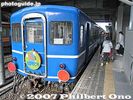
Rear end of train.Feb 02, 2008
|
|
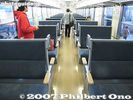
Inside a passenger car. Almost the same as an ordinary train. Should be a wooden floor...Feb 02, 2008
|
|
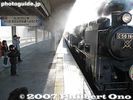
The smoke was all over the platform.Feb 02, 2008
|
|
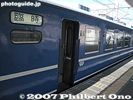
The steam locomotive pulled modern-looking passenger cars.Feb 02, 2008
|
|
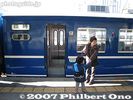
Feb 02, 2008
|
|
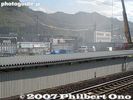
Smoke from the train.Feb 02, 2008
|
|
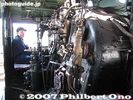
Driver's cabinFeb 02, 2008
|
|

Almost departure timeFeb 02, 2008
|
|

Feb 02, 2008
|
|
|

Checking the furnaceFeb 02, 2008
|
|

Feb 02, 2008
|
|

The steam locomotive was built in 1939.Feb 02, 2008
|
|

Feb 02, 2008
|
|
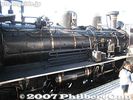
Steam locomotiveFeb 02, 2008
|
|
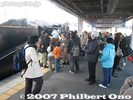
Crowd gathers in front of the locomotive.Feb 02, 2008
|
|
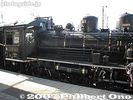
Feb 02, 2008
|
|
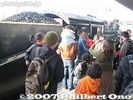
Feb 02, 2008
|
|

Pile of coalFeb 02, 2008
|
|
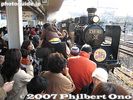
On certain weekends, this steam locomotive runs between Maibara, Nagahama, and Kinomoto Stations in northern Shiga. Very popular attraction among adults and kids alike.Feb 02, 2008
|
|
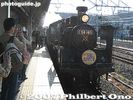
Before the train departs, the passengers take pictures from the train platform. Feb 02, 2008
|
|
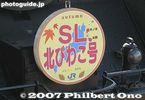
Locomotive nameplate "SL Kita-Biwako" (SL stands for steam locomotive.)Feb 02, 2008
|
|

It's the real thing, belching thick black smoke and steam. Tickets can also be bought one month before departure at major JR train stations. The train ride between Maibara and Kinomoto Stations takes about an hour. The locomotive pulls five train carFeb 02, 2008
|
|

Chikuma Shrine ceremonyJan 02, 2007
|
|

Chikuma Shrine torii 筑摩神社Jan 02, 2007
|
|

Girl with nabe-kanmuri helmet, Nabe-kanmuri Matsuri, Maibara, Shiga Pref.Jan 02, 2007
|
|

Jan 02, 2007
|
|
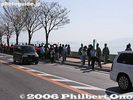
Procession along the shore of Lake BiwaJan 02, 2007
|
|
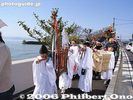
Jan 02, 2007
|
|

Taking a restJan 02, 2007
|
|

Procession along the shore of Lake BiwaJan 02, 2007
|
|

Jan 02, 2007
|
|

Girl with nabe-kanmuri helmet, Nabe-kanmuri Matsuri, Maibara, Shiga Pref. Known as one of Shiga's more unusual festivals.Jan 02, 2007
|
|
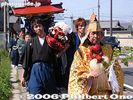
Jan 02, 2007
|
|
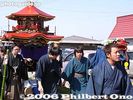
Jan 02, 2007
|
|
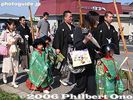
Nabe-kanmuri Matsuri procession held on May 3 by Chikuma Shrine, Maibara, Shiga Pref.Jan 02, 2007
|
|
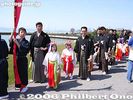
Jan 02, 2007
|
|
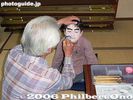
Annual festival held on May 3 by Chikuma Shrine. It is a procession along the shore of Lake Biwa featuring eight 8-year-old girls wearing a "nabe" or pot helmet.The shrine is dedicated to the God of Food and the nabe pot is for containing food offerings to the god.Jan 02, 2007
|
|
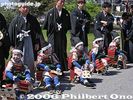
Nabe-kanmuri Matsuri held on May 3 by Chikuma Shrine. It is a procession along the shore of Lake Biwa featuring eight 8-year-old girls wearing a "nabe" or pot helmet. The shrine is dedicated to the God of Food and the nabe pot is for containing Jan 02, 2007
|
|
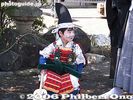
MAPJan 02, 2007
|
|
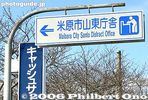
Sign to city hall with misspelled word. "Distract" should be "District."Jan 17, 2006
|
|
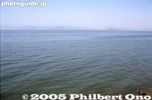
Lake BiwaJan 17, 2006
|
|
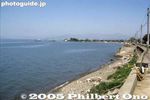
Lake Biwa shoreJan 17, 2006
|
|

Lake Biwa shore. If you leave Maibara Station and head straight for the lake, this is what you will see.Jan 17, 2006
|
|

Oct 30, 2005
|
|

Oct 30, 2005
|
|

Oct 30, 2005
|
|

Oct 30, 2005
|
|

Oct 30, 2005
|
|

Oct 30, 2005
|
|

Oct 30, 2005
|
|

Oct 30, 2005
|
|

Oct 30, 2005
|
|

Oct 30, 2005
|
|

Oct 30, 2005
|
|

Oct 30, 2005
|
|

Oct 30, 2005
|
|

Oct 30, 2005
|
|

Oct 30, 2005
|
|

Oct 30, 2005
|
|

Oct 30, 2005
|
|

Oct 30, 2005
|
|

Oct 30, 2005
|
|

Oct 30, 2005
|
|

Oct 30, 2005
|
|

Oct 30, 2005
|
|

Oct 30, 2005
|
|

Oct 30, 2005
|
|

Oct 30, 2005
|
|

Oct 30, 2005
|
|

Oct 30, 2005
|
|

Oct 30, 2005
|
|

Oct 30, 2005
|
|

Oct 30, 2005
|
|

Oct 30, 2005
|
|

Oct 30, 2005
|
|

Oct 30, 2005
|
|

Oct 30, 2005
|
|

Oct 30, 2005
|
|

Oct 30, 2005
|
|

Oct 30, 2005
|
|

Oct 30, 2005
|
|

Oct 30, 2005
|
|

Oct 30, 2005
|
|

Oct 30, 2005
|
|

Oct 30, 2005
|
|

Pass under the toriiOct 30, 2005
|
|

Up the stairs to the shrine groundsOct 30, 2005
|
|

Oct 30, 2005
|
|

Oct 30, 2005
|
|

Oct 30, 2005
|
|

Shrine grounds where the taiko drum dance is performedOct 30, 2005
|
|

They walk very slowlyOct 30, 2005
|
|

Sannomiya Shrine, at foot of Mt. IbukiOct 30, 2005
|
|

Oct 30, 2005
|
|

Oct 30, 2005
|
|

Oct 30, 2005
|
|

I also saw this Ibuki-yama Taiko Drum Dance 5 years before. The following photos were taken on Oct. 2, 2005. It was the same as in 2010 except for the performers.Oct 30, 2005
|
|
|
| 1947 files on 8 page(s) |
 |
 |
 |
 |
8 |
|